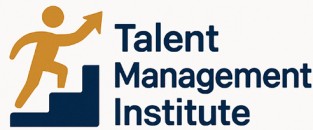
The Importance of Customer Satisfaction in Talent Management
Enhancing Talent Retention through Customer Satisfaction
Ensuring high levels of customer satisfaction has increasingly become a focal point in effective talent management strategies. Customer satisfaction, often measured through CSAT surveys, directly impacts a company's ability to maintain a satisfied workforce. This stems from the understanding that a positive customer experience translates to motivated employees. When employees feel that the products or services they are part of receive positive feedback, their morale improves. Conversely, customer dissatisfaction can lead to a dip in employee motivation, indicating a potential need for changes in strategies or processes. Multiple factors contribute to customer satisfaction scores. These include feedback on the product experience, the effectiveness of customer service, and the overall interaction customers have with the brand. A low satisfaction score can often signal problems, possibly impacting employee satisfaction and turnover. Investing in tools like a CSAT calculator can empower companies to measure these satisfaction scores accurately, enabling the identification of areas that need improvement. By understanding and acting upon the total number of satisfied or dissatisfied customers, organizations can refine their approaches to talent management. Moreover, integrating customer satisfaction insights within talent management practices helps maintain a pulse on the workforce’s engagement and happiness. For further insights into this interconnected relationship, explore how pulse scores play a critical role in talent retention.What is a CSAT Calculator?
Decoding the CSAT Calculator
A CSAT calculator is a tool designed to measure customer satisfaction by evaluating responses from satisfaction surveys. These surveys typically ask customers to rate their experience with a product or service on a scale, often from 1 to 5. The CSAT score is then calculated by dividing the number of satisfied customers (those who rate their experience as 4 or 5) by the total number of responses, and multiplying by 100 to get a percentage.
CSAT calculators are essential in understanding how customers perceive their experience with a company. They provide a straightforward way to gauge satisfaction levels, allowing businesses to identify areas for improvement. By collecting customer feedback through CSAT surveys, companies can pinpoint specific aspects of their service or product that may need enhancement.
While CSAT scores offer valuable insights, they are just one piece of the puzzle. They should be used in conjunction with other metrics like Net Promoter Score (NPS) to gain a comprehensive view of customer satisfaction. This holistic approach ensures that companies are not only meeting but exceeding customer expectations.
For businesses, especially those in the SaaS industry, leveraging a CSAT calculator can be a game-changer. It helps in refining customer service strategies and improving overall customer experience. By regularly measuring customer satisfaction, companies can stay ahead of potential issues and foster a loyal customer base.
For more insights on how CSAT calculators can be integrated into broader talent management strategies, you might find it useful to explore exploring EOR services in the MENA region.
Integrating CSAT Calculators into Talent Management Strategies
Incorporating CSAT Calculators into Talent Management Plans
Integrating a CSAT calculator into talent management strategies can be a game-changer, enhancing the overall customer experience and boosting satisfaction scores. By systematically measuring how satisfied customers feel after interacting with your products or services, companies can better tailor their employee training and development programs. A CSAT calculator, or Customer Satisfaction Score calculator, helps organizations by simplifying the measurement of customer satisfaction through surveys. This piece of technology not only gathers customer feedback but also provides insightful metrics on how various departments, particularly customer service teams, are performing. When you delve into the responses from csat surveys, you can identify what aspects of the customer experience need improvement. High satisfaction scores indicate satisfied customers, which in turn reflect positively on the employees who contribute to these results, such as support teams. These insights can then guide talent management by identifying areas where further training or resources might be necessary. Moreover, the use of this tool is especially valuable for SaaS companies, where customer retention hinges on consistent, high-quality customer service. Here, the CSAT score works alongside other metrics like the net promoter score to give a comprehensive view of customer sentiment. By leveraging these measurements, HR professionals can create more targeted training programs that not only aim to improve customer interactions but also enhance employee engagement and retention. In conclusion, integrating csat calculators into talent management frameworks ensures that organizations can continuously improve customer satisfaction, track employee performance, and adapt strategies to meet evolving customer needs. As businesses increasingly rely on accurate data to make informed decisions, tools like the csat calculator prove invaluable. For more insights on the role of HR in refining talent management, feel free to explore this resource which further elaborates on maximizing human potential in organizational contexts.Benefits of Using a CSAT Calculator
Advantages of Leveraging CSAT Calculators
Utilizing a CSAT calculator can significantly enhance talent management by systematically measuring customer satisfaction. Here are some key benefits you can expect:- Insightful Data Analysis: By regularly collecting and analyzing customer feedback through CSAT surveys, organizations can gain critical insights into the satisfaction levels of their customers. This data helps identify patterns and trends that influence customer experience and product quality.
- Quantifiable Satisfaction Metrics: A CSAT calculator provides a tangible satisfaction score, allowing businesses to quantitatively assess how well they meet their customers' expectations. Knowing this score enables managers to set realistic goals and benchmark performance.
- Improved Customer Relationships: The consistent use of CSAT surveys and acknowledgment of customer satisfaction scores fosters a deeper connection with your clientele. By addressing the feedback received through these tools, businesses can work towards creating a more satisfied customer base.
- Informed Decision-Making: A precise measurement of customer satisfaction empowers organizations to make informed decisions. Whether it's refining customer service practices or adjusting product offerings, decisions grounded in reliable customer feedback enhance the effectiveness of talent management strategies.
- Enhanced Customer Retention: Monitoring CSAT scores helps identify dissatisfied customers before they churn. Acting on negative feedback and enhancing elements that affect customer experience can lead to higher retention rates and increase the number of satisfied customers.
- Competitive Edge in the Market: In industries where SaaS and customer experience drive the market, maintaining a high CSAT score can provide a competitive edge. Happy customers become promoters, positively influencing the company's net promoter score and market reputation.
Challenges in Implementing CSAT Calculators
Overcoming the Hurdles of Implementing a Customer Satisfaction Score System
Implementing a CSAT calculator into your talent management strategy might seem straightforward, but it has its own obstacles. One of the main challenges is ensuring the accurate measurement of customer satisfaction through surveys. Consider the following points:- Data Collection: Gathering an adequate number of survey responses can be difficult. Engaging customers without overwhelming them with too many surveys requires a balanced approach. A low response rate could lead to an inaccurate satisfaction score.
- Technological Integration: Integrating CSAT calculators and tools into existing customer feedback systems can be complex, especially for companies using multiple SaaS products. Ensuring that these systems communicate effectively is crucial.
- Interpreting Results: Companies must correctly interpret satisfaction scores to improve customer experience accurately. This involves understanding how scores reflect on various aspects of product or support.
- Managing Customer Expectations: It's important to manage customer expectations when dealing with feedback. This includes setting clear goals to measure improvement in satisfaction metrics.












